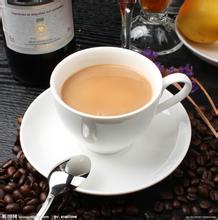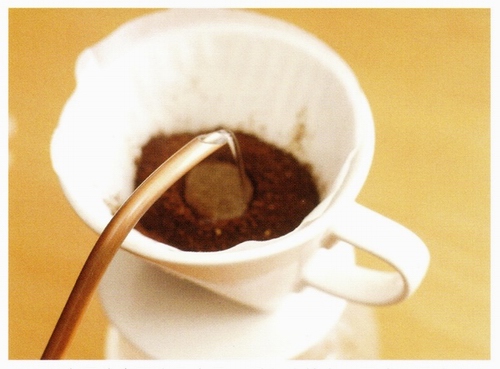Refreshing and comfortable citrus flavor Panamanian Kasha coffee taste introduction to boutique coffee beans in the manor
In September 1977, Pakistan and the United States signed the Panama Canal Treaty (also known as the Torrijos-Carter Treaty). [5]
In May 1989, Panamanian elections were declared invalid by both the ruling and opposition parties. After mediation by the Organization of American States, Rodriguez became interim president on August 31. On December 15, Noriega, who opposed the U.S. occupation, was appointed head of government. On December 20, U.S. troops invaded Panama. On December 21, former opposition presidential candidate Ndara, who was sheltered by the United States, was sworn in as president at the U.S. military base. [5]
In January 1990, Noriega surrendered to U.S. forces and was subsequently taken to the United States for trial.
On October 4, 1994, Pakistan's parliament passed a draft amendment to the constitution, providing for the abolition of the army and the establishment of a police force.
Panama regained sovereignty over the Canal on December 31, 1999. [5]
On October 28, 2015, he was elected to the United Nations Human Rights Council for a term of office from 2016 to 2018. Panama's flag was adopted on November 3, 1904. The flag is rectangular and has an aspect ratio of 3:2. The flag consists of four rectangles of white, red and blue. White symbolizes peace; red and blue represent the Liberal Party and Conservative Party of Panama, respectively, and are also symbols of the unity and struggle of the two parties for the interests of the nation. The blue star on the upper left represents loyalty and integrity, and the red star on the lower right represents the authority of the law. The design of the crosshairs divided into four sections represents Panama's location at the junction of South America, North America, the Atlantic Ocean and the Pacific Ocean. Red, blue and white are the colors of the United States Star Spangled Banner, which supports Panama's independence. This flag was designed by Manuel Amador Guerrero, the first President of Panama. The current Panamanian government was formed on July 1, 2009. The main members are: Vice-President Juan Carlos Barrera, Minister of the Presidency Jimmy Papadimiriou, Minister for Foreign Affairs Fernando Núñez Favre, Minister of the Interior Jorge Ricardo Favre, Minister of Public Security Jose Raul Murino, Minister of Economy and Finance Frank George de Lima, Minister of Industry and Commerce Ricardo Quijano, Minister of Agricultural Development Oscar Armando Osorio Casar, Minister of Health Javier Diaz, Housing Minister Yasmina Pimentel (female), Labor Minister Alma Lorena Cortez (female), Social Development Minister Guillermo Ferrufino, Education Minister Lucy Molinal (female), Public Works Minister Jaime Ford, Small and Medium Enterprises Minister Cicero Brillo (female), Canal Minister Robert Roy, Tourism Minister Salomon Samar
Coffee was first brought to Panama by European settlers in the 19th century. In the past, Panamanian coffee was not well known and its production was only 1/10 of that of its neighbor Costa Rica, but now the coffee industry's attention to fine coffee has made Panama increasingly interested in growing coffee. Coffee was first brought to Panama by European immigrants in the 19th century. In the past, Panamanian coffee was not very popular, and its production was only 1/10 of that of its neighbor Costa Rica, but now the coffee industry's attention to fine coffee has made Panama increasingly interested in growing coffee. When the commodity price of coffee is still relatively low, the Panamanian Fine Coffee Association organizes a competition called "Best Panama": coffee beans from different regions of Panama are evaluated and auctioned online. Esmeralda Estate has been growing a coffee called Geisha for many years, and this auction makes their coffee known to more people. From 2004 to 2007, they won the competition for four consecutive years, then won it again in 2009, 2010 and 2013. It continued to break records until it was priced at $21/lb in 2004, then rose to $170/lb in 2010. In 2013, a small percentage of sun-treated coffee sold for $350.25/lb. No one doubts that this is the highest price ever paid for a single estate coffee. The Geisha seed was discovered in Ethiopia's Guisha Forest in 1931 and sent to the Coffee Institute in Kenya; introduced to Uganda and Tanzania in 1936; introduced to Costa Rica in 1953; and Panama in the 1970s by Francesco Seracin of Domba Seven Farm, who distributed the seed from Costa Rica's CATIE and began growing the coffee.
Geisha, carrying hurricane-like power to sweep the coffee world, this coffee revolution is fierce, so that originally occupied the coffee kingdom throne for a long time one king and one Jamaica Blue Mountain, Hawaii Kona also have to retreat, this wild variety originally from Ethiopia, after experiencing countless battles, is now all over the major coffee producing areas, and its best spokesman is from Panama "LaEsmeralda" estate Boquete is a high-altitude volcanic area, Because Baru Volcano brings fertile soil, high terrain, wet and cold air, different sunshine, abundant rainfall, and rivers flowing through it, it makes high-quality Panamanian fine coffee. This batch of coffee comes from the same production area as Emerald Manor, which happens to be located in a continuous valley and ridge, thus forming several microclimates. Coffee produced in different areas has its own characteristics. Fresh and comfortable citrus feel, bright and colorful Southeast Asian fruit feel, delicate floral intertexture exudes a very elegant and elegant flavor

Important Notice :
前街咖啡 FrontStreet Coffee has moved to new addredd:
FrontStreet Coffee Address: 315,Donghua East Road,GuangZhou
Tel:020 38364473
- Prev

Puerto Rican coffee with complete flavor, characteristics, taste and manor introduction
In the coffee industry, when it comes to coffee from the island, I think you must be no stranger to the Blue Mountains of Jamaica and Kona of Hawaii, which are famous boutique coffee. In fact, if we talk about coffee from island origin, there is another kind of coffee that is worth talking about and tasting, and that is Puerto Rico. If you look for its location on the earth, it may not be easy to find. Let's learn about it together.
- Next

Peruvian coffee flavor Peruvian coffee characteristics
As a rising star in the coffee industry, Peruvian coffee is gradually opening up its popularity and entering the international market. Peruvian coffee has always been used as one of the stable and mellow mixed beans of comprehensive coffee. Peruvian coffee has a mellow taste and the right acidity, and this lukewarm coffee attitude has made more and more people like it. Peru is located in western South America, with a coastline of 2254 kilometers. Andes
Related
- Detailed explanation of Jadeite planting Land in Panamanian Jadeite Manor introduction to the grading system of Jadeite competitive bidding, Red bid, Green bid and Rose Summer
- Story of Coffee planting in Brenka region of Costa Rica Stonehenge Manor anaerobic heavy honey treatment of flavor mouth
- What's on the barrel of Blue Mountain Coffee beans?
- Can American coffee also pull flowers? How to use hot American style to pull out a good-looking pattern?
- Can you make a cold extract with coffee beans? What is the right proportion for cold-extracted coffee formula?
- Indonesian PWN Gold Mandrine Coffee Origin Features Flavor How to Chong? Mandolin coffee is American.
- A brief introduction to the flavor characteristics of Brazilian yellow bourbon coffee beans
- What is the effect of different water quality on the flavor of cold-extracted coffee? What kind of water is best for brewing coffee?
- Why do you think of Rose Summer whenever you mention Panamanian coffee?
- Introduction to the characteristics of authentic blue mountain coffee bean producing areas? What is the CIB Coffee Authority in Jamaica?

